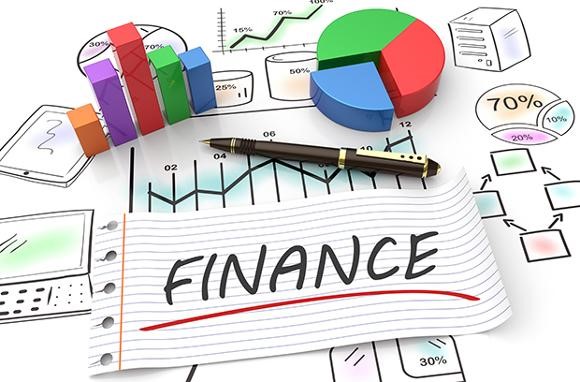Where Are Women in the Disruption of the Financial Sector?

The financial sector is another industry where most of the business is conducted by men. Do not get me wrong, there is a significant percentage of women being employed by banks, but the major issue arises when we talk about senior positions in the financial sector. Being dominated for a long time by male directors and CEOs, left women underrepresented. Searching for reasons why one has to know that financial sector is a very traditional and conservative ecosystem. Introducing a change has always been challenging, until now.
Today, the financial sector is being disrupted by new entrants who, with a help of technology, are reshaping existing standards of doing business. By innovating openly and engaging customers into product development processes, financial technology companies (FinTech) introduce new landscape into the financial sector.
The finTech phrase describes the segment of the emerging technology startup scene that specifically deals with financial services. Startups, but also tech giants who introduced innovative financial products and services are often referred to as FinTechs. Services provided by those players may vary from payments, lending, asset management, money transfers, or fundraising. What differentiates these from banks’ offering are their digital and innovation aspects. FinTechs’ strategies are either based on leveraging market niche or upgrading already existing products to become more innovative, faster and easier to use.
Some experts refer to FinTech as disruptors. Companies entering markets with disruptive technologies and innovation are challenging established incumbent businesses – “As incumbents focus on improving their products and services for their most demanding (and usually most profitable) customers, they exceed the needs of some segments and ignore the needs of others. Entrants that prove disruptive began by successfully targeting those overlooked segments, gaining a foothold by delivering more-suitable functionality – frequently at a lower price.”
In understanding what role FinTechs play in today’s financial sector, it is crucial to understand the basics of disruptive innovation. As it is changing the metrics of doing business, it also changes the metrics of competing. Noteworthy is the fact that entrance of new players provides more opportunities for individuals and businesses by facilitating a payment or borrowing processes. It also has the capacity to deliver financial services to the estimated 2.5 billion people across the globe without access to basic bank accounts. What FinTechs are particularly likeable for is changing the rules in which the game is played in regards to where you can acquire access to money, and how you can move it across borders at a lower cost. It is no longer the stringent and ruthless bank who will determine your future or the future of your business.
FinTechs often picture their mission as one that supports underprivileged communities and creates a change for those who do not have access to bank accounts. While this, in most cases, is true, innovators skip the problematic issue of the gender gap in the FinTech space. The trend of female professionals in banking who are switching to FinTechs is becoming more and more prominent. Yet again, they are entering the domain where women’s presence is still fairly low.
The report prepared by Innotribe “Power Women in FinTech Index: Bridging the Gender Gap” specifically addresses the issue of gender imbalance in the FinTech sphere. The authors, for instance, emphasise the key role of women in managing household income and retail spend. Improving the gender balance in FinTech is necessary in order to truly develop products and solutions that address the needs of all users. FinTech is in a position to act as a catalyst for change given the disruptive impact it has on the broader, established industry.

Today, only 8 per cent of FinTech directors globally are women. Some claim that gender bias in the financial sector is caused by the wrong perception that the finance and banking sector is a boys-only club. However, while still in its infancy when it comes to gender equality, the financial sector started welcoming some promising women entrepreneurs.
One of the most successful female FinTech players is Amy Nauiokas who is a founder and a president of the FinTech investment firm Anthemis. Nauiokas’ career path involved her being a CEO and Managing Director at Barclays Stockbrokers. She also worked at places like Bear Sterns and Cantor Fitzgerald before setting up Anthemis in 2008.
Amy Nauiokas is an example of an acknowledged professional who used to work in the banking sector and eventually moved into the FinTech sphere. This is a major trend of a thriving female individual who left en masse for better opportunities.
Developing and running a FinTech is not necessarily limited to individuals who are coming from the financial sector, or who used to hold a management position at the world’s biggest banks. A lot of success stories start with an idea for a solution to a problem. Like the story of a Polish entrepreneur – Marta Krupinska – who as an expat living in Ireland faced many challenges when sending money home. Being charged tremendous fees by one of the money transfer companies, she chose to fly back home and travel with her money instead. It was actually cheaper than making a transfer.
This way Krupinska together with Michael Kent created Azimo, a digital money transfer service for European migrants to send money anywhere in the world in 70+ currencies, at up to 90% lower than high street money transfer companies.
Marta, as well as her company, have received global recognition for their efforts. This is more evidence that determination, faith in your capabilities and not subjecting to commonly accepted standards can guide you to success.
Disruptive technology is close to Celine Lazorthes’ heart, founder and CEO of MangoPay and Leetchi.com. Starting her career as an online marketing manager, she quickly moved on to creating a platform for collecting money for birthday presents, parties and a solidarity of charity projects. Leetchi.com has more than 7m clients from 150 countries. Subsequently, she created MangoPay, a B2B payment solution dedicated to marketplaces, crowdfunding and the sharing economy.
Although I could go on with interesting examples of successful ventures in the FinTech sphere led by women, I can only assure you that there are plenty. There is, however, a long way to go before the number of women in FinTech will approach that of men. How the gender gap can be reduced depends on the proper education of women. Expanding women’s knowledge and abilities in the domains of technology and entrepreneurship are crucial. Moreover, creating more flexible and diverse working environment suitable for both, men and women, is essential. It is time for the financial sector to move on.
BIO:
Weronika Slowinska is a Copenhagen-based graduate, majoring in Business Administration and Information Systems. Passionate about digital marketing. Extremely fond of disruptive technologies and entrepreneurship. Weronika prides herself in creating a high-quality content for UK-based Market Inspector, a B2B comparison website.
Sources:
https://innotribe.com/wp-content/uploads/2015/06/The-PowerWomen-in-FinTech-Index-Bridging-the-Gender-Gap.pdf
http://www.huffingtonpost.com/anne-ravanona/trailblazing-women-marta_b_9404926.html
https://www.ft.com/content/abb4c88e-d9bd-11e6-944b-e7eb37a6aa8e




















